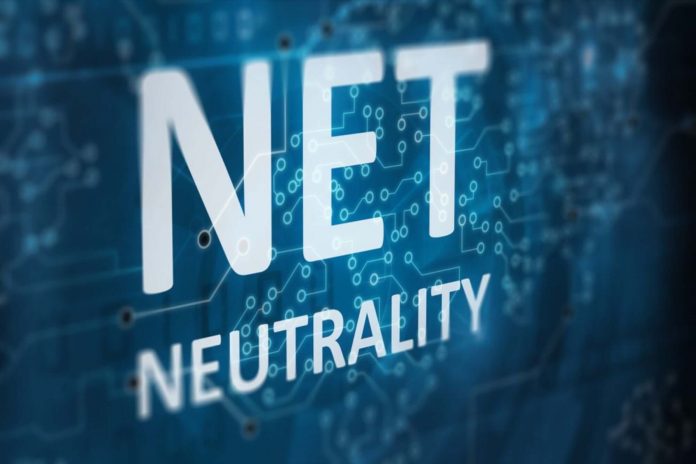This article is written by Vaishali pursuing Diploma in Cyber Law, FinTech Regulations and Technology Contracts from LawSikho.
Table of Contents
What are paid prioritization and net neutrality?
By definition, the paid prioritization means optimizing the data transfer rates for the providers of edge traded for payments. The possibility of the “fast lanes” is created by the paid prioritization for the big media sites and service providers such as Google, Facebook, Netflix, etc. This is also named vertical prioritization.
The question arises regarding the fairness for certain types of internet traffic which requires it to be prioritized as an important aspect of net neutrality. The critical analysis of net neutrality is based on the bandwidth-hogging media giants like Netflix, which adds on a heavy burden of an extra payment. The two major critics of paid prioritization are Netflix and Google, and the other edge providers make claims regarding the fast lanes to enable the internet service providers to act as gatekeepers and give them influential power to free-market activities.
In this article, we will go through the development phases of Net Neutrality in India, China, and the USA specifically related to 5G. Further discussing, plans and strategies adopted by India on 5G spectrum followed by case study.
Net neutrality and its development
China overtaking the US in GDP and 5G is the recent talk in the town. Indians have always been the forerunner in digital and mobile technologies but are hindered by the regulations and crony capitalism that blocks the growth.
5G is the new global wireless standard, faster and lower latency, packing density, etc. in comparison to 1G to 4G. This enables a new kind of network that connects everyone virtually with everything including machines, objects, devices, etc. Like the 4G, the 5G also requires a regulatory framework for the content and pricing.
The US and the other liberal democracies are not able to cross China in the race of global 5G, and the reason behind it can be assumed as the estimation of China is almost 10 times bigger than the US in the 5G space. This can be considered as a national emergency where the US requires the necessary bandwidth and funding of the telcos. Schmidt in a conversation with CNN pointed out that if the technologies are built in China, they can not be assorted, they will be following the privacy rules or ethics of the other legislation, therefore, it is recommended to be careful. The China Government may have a plan to lead the AI global market by 2030, whereas, Indians have proved to be a fast-paced nation when it comes to the liberalisation of the 2G and 4G networks.
China has the 5G networks which are among the most advanced globally, except for India, which is enabled to challenge them like the US had done in the past, after 1980. CCS Insights recommends that China has the probability to account for more than half of all 5G users by 2022, and expects to be dominated by 2025, at which, as per GSMA, it might represent 40% of the global 5G connection. Published by the China Academy of Information and Communication Technology, the 5G study specified that the aggressive investment in 5G infrastructures will be the key to the country’s status as the world’s largest 5G market, but if India challenges as it did for 2G and 4G, the capture on market can be difficult.
The Government of India is dealing with the issues of high prices of the spectrum, and the limitation of their availability and usage. The problems faced in the case of 2G in the year 2004, but it carefully dealt with the new unified access regulations, license fee, and connectivity charges.
The report published in August 2018, named ‘Making India 5G ready’ by Inter-Ministerial High-Level Forum for 5G (Paulraj Committee), where India anticipated the start of 5G in 2020. The report suggested the Government create a framework to enable the development of the 5G services in India. However, the progress is quite slow as several new developments have taken place, and the 5G is introduced gradually and advancement of a full range of services as an ecosystem and the growth in demand for the services.
The Indian IT technologists are advanced and the 5G can unleash new opportunities in economic aspects and benefits to the Indian societies to influence it in being a transformational force. This can be helpful for the country to be a leapfrog t5o cross the traditional barrier for the development of the Digital India Mission. The cumulative economic impact of 5G on the country can be extended up to $1trillion within 2035.
However, the progress in the new services of 5G is still slow in India and it does not match the anticipated fee.
Thus, the apprehension about India is that they may lag in the race of the 5G due to the inadequate preparation issues relevant to spectrum, inappropriate use-case development of use cases, low status of fiberization, non-uniform RoW issues, deficient backhaul capacity, etc. are some of the factors on the way of rolling out of 5G in India.
The reports overstate the Chinese extension of 5G deployment for several reasons. Such as a push to the government to accelerate use migration to 5G through several packages such as upgrade offer, credit purchases, etc. The encouragement to the customers by the service providers for the upgradation to the 5G subscription without giving any regard to the actual need.
What is the strategy India has planned out for the 5G spectrum?
- The 5G can contribute to the prosperity of the nation and secure the new change into the present age economics which is a fast progressing economy. The fast network connection shall be contributing to the consumers, businesses, and government enabling ten billion new devices to empower the internet, transformation of the lifestyle and communication. The cost of the spectrum should be logical enough to remove any artificial cost incurred.
- Indigenous and effective cases of the 5G shall develop as the backbone of the 5G.
- It is finalized by the Indian government for the list of industries where the new technologies are in demand and they should be handheld preliminary.
California’s net neutrality law and zero-rating government services
The net neutrality law of California implemented in 2018, raised the concern regarding the legality of “zero-rating”. The definition of zero-rating is the practice that involves the commercial arrangements and unilateral decisions taken by the operations of the network are released from the consumer pricing.
Most of the consumers have accepted the zero-rating and data sponsor in the mobile workplace for the commercial streaming services, such as movies and music, those are exempted from data caps or included in unlimited monthly service packages.
Case study
It was found that a group working in support of the largest internet service provider in the USA, was secretly funding the submission of millions of fake comments in opposition to the federal net neutrality rule. The report was published by the New York Office of the Attorney General, where it was claimed that the campaigns were a part of an effort to provide a shield to the plan of former Federal Communications Chairman Ajit Pai to destroy the net neutrality protections of Federal Communications Commissions.
The FCC’s adoption of the principle of net neutrality under the Open Internet Order Mar 2015, and forbade the surcharges for “better than best efforts” or the paid prioritization to stop any differential treatment to the online content.
18 million comments out of 22 million comments submitted to the FCC opposing its decision of net neutrality, were fake, whereas, around 8.5 million supported the overturn of the federal net neutrality rule, which was submitted by the firms paid by the Non-profit Broadband of America. The reason behind such fake submissions was investigated and it was found that almost $4.2 million was paid to entities; Fluent, Opt-Intelligence, and React2Media, three lead generating firms, for the purpose.
The fake comments submitted under false names and addresses used by BFAs were mostly of such persons, who were dead. As per the report, the BFA listed the largest ISPs in the United States including AT&T, Comcast, Charter, Cox, and CenturyLink.
The wave of fake comments was an execution plan by BFA to prevent FCC’s 2015 net neutrality protections, However, the fake comments incident which was unable to prevent the Americans from supporting the net neutrality protection did not take any disciplinary action against Ajit Pai.
Conclusion
Net neutrality is a concept that codifies all the online content and traffic to be treated equally to determine the ISPs more generously than slow down, blocking of the application online, throttling to put on a preference of their products over the other products. Theoretically, the regulations relevant to net neutrality prevents zero-rating or sponsoring any data programs that are unable to accept any assurance or surcharges on the delivery of content to specific customers.
In India, there is no dedicated law on Net Neutrality. It was only on 12 July 2018 that certain rules were given effect based on the recommendations from the Telecom Regulatory Authority of India. These rules technically barred any form of data discrimination in the online space and violation of these rules by the Internet Service Providers could lead to the cancellation of their licenses. Although this is a strong move towards net neutrality, we still need proper regulatory law in this regard. We are well aware that in the telecom sector there are some players who cater to more than 590 million active internet users. Now after digitization, it is evident and an established fact that the internet is no more a luxury but a necessity. High pricing policies as per whims and fancies of the dominant player call for some restrictions and supervisions. Therefore, we need some stringent laws and regulations to revamp the internet sector.
References
Students of Lawsikho courses regularly produce writing assignments and work on practical exercises as a part of their coursework and develop themselves in real-life practical skills.
LawSikho has created a telegram group for exchanging legal knowledge, referrals, and various opportunities. You can click on this link and join:
 Serato DJ Crack 2025Serato DJ PRO Crack
Serato DJ Crack 2025Serato DJ PRO Crack











 Allow notifications
Allow notifications



